It’s a hectic day in the emergency department (ED), where the triage nurse Laura* is interviewing 30-year-old Shawn. Shawn’s girlfriend is close by his side.
Laura asks, “So, you’ve had abdominal pain all night? Let’s finish getting your history. Have you ever had surgery?”
Shawn replies, “Yes, I had a bilateral mastectomy 6 years ago.” Looking puzzled, Laura repeats, “A mastectomy? Did you have cancer?”
“No, it was elective surgery. I’m a trans guy.”
Laura frowns and says, “I don’t understand.”
“I was born female but I’m a guy, so I had the mastectomy.”
Laura shakes her head and says, “Okay, I’m still not clear. Are you a man or a woman? I have to know because we need a pregnancy test if you’re a woman.”
“I’m not pregnant. I don’t have sex with men.”
“Okay, so you have a penis?”
“No, I don’t have a penis. I have a vagina.”
“Well, then, you’re a woman, and we need a pregnancy test.”
Laura’s an experienced ED nurse who calmly handles adult traumas, pediatric codes, and everything in between. But she doesn’t know how to competently communicate with or assess a person who identifies outside of the traditional gender binary (man or woman). At age 50, Laura is typical of American nurses. She was educated when society viewed people either as male or female. Today, though, we recognize that people have life experiences that can fall anywhere along the spectrum of gender identity, gender expression, and sexual orientation. Unfortunately, nursing education hasn’t kept pace with this societal change; transgender health care is not yet included in the typical American nursing curriculum. To provide the best care for all patients, nurses should update and incorporate new knowledge about gender identities into patient interactions. (See 10 ways you can provide a safe environment for all patients.)
What could Laura have done to provide Shawn with the best care during triage? In this article, we’ll explore how to:
1. recognize, honor, and educate yourself and others about the spectrum of gender identities and expressions
2. respect the patient’s identity by using the correct address in all communication
3. create a caring and inclusive environment through competent nursing communication
4. incorporate nursing values of social justice and advocacy into care for all people
Recognizing the spectrum of gender identity and expression
Historically and across cultures, people have a wide spectrum of gender and sexual identities and expressions. American society has traditionally assigned gender based on newborn genitalia, using the male and female binary. And most nurses are familiar with the term intersex, referring to people born with genitalia, organs, or chromosomes that don’t fit binary expectations. Intersex people have usually undergone surgical interventions to fit into the binary.
Over the last few generations, however, scientific discoveries and globalization have led to rapid cultural shifts about the concept of gender. Today, we understand that gender is a core internalized identity as a man, woman, or other and is not solely determined by the person’s sex assignment at birth. People may hold a variety of gender identities, expressed in terms such as gender nonconforming, transgender, gender neutral, agender, gender variant, genderqueer, or other terms. Gender expression is different than gender identity. Gender expression refers to how people choose to express themselves and is not related to sexual orientation. For example, someone may have a male birth sex, identify as a heterosexual man, but choose a nontraditional gender expression by wearing pink nail polish or dresses.
Most nurses are familiar with the idea of a transgender person who lives exclusively in a gender identity that is different than their assigned birth sex. For example, Laverne Cox, a trans woman, speaker, advocate, and actress in Orange Is the New Black, was born and raised as a man but later identified and transitioned to a woman. However, gender change is not determined by surgical treatment. Many transgender people don’t have genderaffirming surgery (formerly known as sex change surgery, now considered an outdated term) and may or may not use hormones. Some people identify as another gender and live a gender-neutral life, not identifying as either man or woman.
People can run the gamut of gender identities, which can be fluid and change throughout life. Youth and adolescence can be times of rapidly evolving identity, and nurses working with these populations should be cognizant of the role that gender identity plays in their healthcare needs. No matter the healthcare setting, nurses work with transgender people and should avoid assumptions based on appearances; approach each individual with an open and caring presence.
Respectfully addressing the patient
In their basic education, nurses learn to address patients according to patient preference, as a sign of respect and caring. For example, if the patient Arnold says, “Please call me AJ,” calling him Arnold would be disrespectful. This principle holds true for people across the gender spectrum. Regardless of appearance or clothing, a patient may identify as a woman and prefer the pronoun she or identify as a man and prefer the pronoun he.
However, people who identify across the gender spectrum may not feel comfortable being referred to with the pronouns she/her or he/him because these pronouns don’t reflect their personal gender identity. New gender-neutral, nonbinary pronouns include they/them, zie/zim, and sie/sir. (See Small words matter.) Ask patients about their preferred gender pronouns (PGP) and use them consistently.
In admission assessments, record the patient’s PGP, include it during report, and reinforce the importance of its use with other healthcare workers. Don’t rely on insurance information to use the correct PGP. In Shawn’s case, for example, his insurance forms may have recorded him as female. Healthcare systems are beginning to use electronic health records that allow room for gender identities other than birth sex, but the practice isn’t yet widespread.
Laura could have started her conversation with Shawn by saying, “Hello, I’m Laura the triage nurse. My pronouns are she and her.” This introduction demonstrates an open caring demeanor and allows the patient to state their preferred mode of address. If you don’t feel comfortable using this language without further training and practice, you could simply ask, “How may I address you?” Research shows that patients welcome being asked about their sexual orientation and gender identity on admission.
Creating a caring environment
Laura began her triage questions with some tried-and-true communication techniques, such as reflection (“A mastectomy?”) and seeking clarification (“I don’t understand”). Unfortunately, she didn’t remain open. Open-ended questions allow the patient to speak from their own experience and provide the nurse with insight into individual care needs.
When Laura asked if Shawn was a man or a woman based on having a penis or vagina, she offended him and limited him to two inaccurate answers. She prevented quality feedback and blocked active listening by using a close-ended question. Laura needed information about Shawn’s abdominal and pelvic biology but could have used a simple open-ended statement, such as, “Tell me how your transition affected your abdominal and pelvic organs.” Openness and sensitivity are required to elicit quality information and maintain the patient’s trust. If the nurse makes a mistake in terminology or communication, a sincere apology can demonstrate caring and restore trust. Continued nursing education about care of gender-nonconforming people will minimize mistakes. (See Keep learning.)
Gender, as with religion and ethnicity, is determined within each individual and can’t be assigned by others based on appearance. Laura essentially hijacked Shawn’s identity, insulted him, and lost trust. People living as transgender or nonbinary are very conscious that gender roles, lifestyles, and life experiences are fluid and socially constructed. Misgendering someone is insensitive, demeaning, and can be considered a violent act.
Social justice and advocacy
Both the ANA Code of Ethics and Social Policy Statement remind us that nursing knowledge grows with society, and that nurses should advocate for the best health care for all people. (See Lead the way.) Gender-nonconforming people face significant health disparities related to discrimination. After Shawn was treated disrespectfully by Laura in triage, he may neglect routine Pap smears out of fear of further discrimination. Trans women have prostate glands but may neglect routine prostate cancer screenings to avoid anxiety caused by poor treatment in healthcare systems.
Advocacy can mean simply acting as a role model, confronting, educating, and working toward change if colleagues make jokes or behave unprofessionally. Nurses can build an inclusive healthcare climate in which gender jokes are as unacceptable as racist jokes. Advocacy can extend to work on widespread adoption of inclusive healthcare policies. For example, some hospitals in New York now admit patients to rooms congruent with their gender identity regardless of birth sex. Gender-neutral bathrooms are becoming more widespread. These measures promote access to care for all patients.
The role of nurse as advocate is built first upon knowledge; nurses need to continually assess the adequacy of their current knowledge and seek ongoing education in work ing with people across the gender spectrum. As with all areas of nursing, the best patient outcomes start with our foundational values of caring and respect. People, society, and nursing are continually changing, and that is what keeps the profession interesting and rewarding.
*Names in clinical scenarios are fictitious.
Katherine Sullivan and Anissa Guzman are assistant professors of nursing at the University of Northern Colorado in Greeley; Danielle Lancellotti is a consultant specializing in women and gender studies in Lafayette, Colorado.
Selected references
Cahill S, Singal R, Grasso C, et al. Do ask, do tell: High levels of acceptability by patients of routine collection of sexual orientation and gender identity data in four diverse American community health centers. PloS One. 2014;9(9):e107104.
Callahan EJ, Hazarian S, Yarborough M, Sanchez JP. Eliminating LGBTIQQ health disparities: The associated roles of electronic health records and institutional culture. Hastings Cent Rep. 2014;44(Suppl 4):S48-52.
National LGBT Health Education Center: A Program of the Fenway Institute. Learning modules.
Schulz SL. Gender Identity: Pending? Identity Development and Health Care Experiences of Transmasculine/Genderqueer Identified Individuals [dissertation]. Berkeley: University of California; 2012.
Spivey MJ. Integrating Patient Sexual Orientation, Gender Identity and Health Care: A Workshop for Primary Care Practitioners [dissertation]. Newton: Massachusetts School of Professional Psychology; 2013.
United Nations Human Rights, Office of the High Commissioner. Free and Equal.
Walsh D, Hendrickson SG. Focusing on the “T” in LGBT: An online survey of related content in Texas nursing programs. J Nurs Educ. 2015;54(6):347-51.
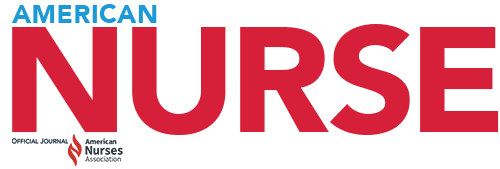




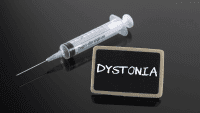
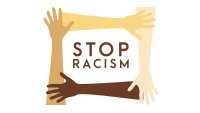


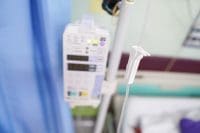


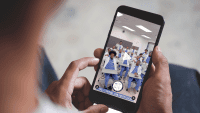

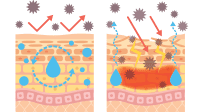


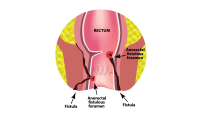

2 Comments.
Please explain the acronyms. It is hard to follow the article or review if I have no idea what you are talking about. You spelled out the Gay and Lesbian Medical Association (GLMA), but then used the acronym GBT and LBT, I am not sure what these stand for. Thanks for explaining.
In the May issue of American Nurse Today, Nursing communication and the gender identity spectrum article I so see myself in nurse Laura. In her Well-intentioned but hurried and just the facts approach. As a practicing nurse for over 20 years I am writing this letter to the editor as a confessional, I am guilty. I am writing this letter to the editor, to nurses in general to highlight what was missed in the article, non-verbal communication/cues. Nurses often communicate to LGBT patients non- verbally.
Several years ago, while at work I was approached by a nurse asking, “Have you met the patient in room 001?” To which I responded, “No, why?” She said with a wry smile, “You’ve got to meet her, she’s one of those,” while making a hand gesture. I was not sure what to expect but my curiosity was piqued. As the new member of the administration team I went to visit room 001 to introduce myself and get a closer look. I entered her room and introduced myself, Sheila (name changed) was a trans woman, she was polite but it was obvious she found the visit peculiar. I got my close-up but was immediately struck with guilt and embarrassment because we both knew why I was really there. I had come to look at “the queer, the sideshow”. I felt terrible. Though it was never said it was tacitly understood. I remind nurses that often we communicate to our patients not solely by what we say, but what we do; and in turn how we make them feel. We are constantly sending non-verbal cues that make our LGBT population feel uncomfortable, hence reluctant to seek healthcare.
Thankfully, my facility had a culturally competent class specific to LGBT several weeks later that addressed how to communicate with the LGBT patient and specifically addressed what not to do. Baker and Beagan (2014) described this inappropriate attention by staff and feeling of heightened visibility of the LGBT patient as problematic. The Gay and Lesbian Medical Association (GLMA) offer guidelines on how to treat LBGT patients. According to GLMA, the LGBT population is at increased risk of social stress, depression, substance and alcohol abuse. GBT men smoke 50% more than other men, and LBT women smoke 200% more than other women.
As healthcare professionals, we should not be contributing to our patients’ stress through our cultural incompetence. Baker and Beagan (2014) found that LGBT patients experience healthcare settings as heterosexual spaces and often times feel unwelcomed. As patient advocates and health promoters’ nurses owe it to our clients to foster a trusting welcoming environment that encourages open communication and not impede it. This article helps to close the cultural gap between nurses and the LGBT community through effective communication. Thank you for your timely article.
Sandra Antor, BSN, MSN/MBA, RN